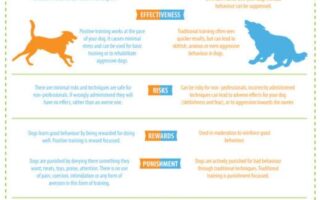Bringing a new dog into your home can be one of life’s greatest joys, filled with wagging tails, playful barks, and the warmth of companionship. However, this exciting chapter often comes with a challenge that every pet owner must navigate: housebreaking. Imagine the moments of delight as your furry friend explores their new environment, only to be followed by the occasional mishap that tests your patience. Housebreaking a dog is not merely a task; it’s a journey of understanding, consistency, and connection. In this article, we will explore effective techniques and practical tips to help you and your canine companion master the art of housebreaking, transforming your shared space into a harmonious haven for both of you. Whether you’re a first-time dog owner or looking to brush up on your skills, let’s embark on this adventure together, armed with knowledge and a little bit of humor.
Table of Contents
- Understanding Canine Behavior: Unraveling the Instincts Behind Housebreaking
- Creating a Routine: Establishing a Structured Schedule for Successful Housebreaking
- Effective Techniques: Proven Methods for Teaching Your Dog Where to Go
- Navigating Challenges: Troubleshooting Common Housebreaking Issues with Confidence
- Q&A
- To Conclude
Understanding Canine Behavior: Unraveling the Instincts Behind Housebreaking
To effectively housebreak your dog, it’s essential to understand the basic instincts that drive their behavior. Dogs are instinctively denoted as den animals, meaning they seek out confined, secure spaces where they can feel safe. This instinct can aid in housebreaking, as creating a designated area for your dog to relieve itself can mimic this natural behavior. Using positive reinforcement is crucial; praised and rewarded behaviors will encourage your dog to associate going outside with positive experiences.
Furthermore, your dog’s tendency to keep their living area clean provides a foundation for training. They will naturally prefer not to eliminate where they sleep or play. Establish a consistent routine that includes scheduled feedings and regular potty breaks. This method allows their body clock to adjust, enhancing the likelihood of success. Here are some key factors to consider:
- Frequent potty breaks: Regularly escort your dog outside, especially after meals, playtime, or naps.
- Designated bathroom spot: Lead your dog to the same area outdoors to help them learn where it’s appropriate to relieve themselves.
- Watch for signs: Learn to recognize cues that your dog needs to go, such as sniffing, circling, or whining.
| Behavior | Response |
|---|---|
| Whining or barking | Check if they need to go outside |
| Circling or sniffing | Take them out immediately |
| Running to the door | Open the door promptly |
Creating a Routine: Establishing a Structured Schedule for Successful Housebreaking
Establishing a consistent routine is vital for successful housebreaking, as it helps your puppy understand expectations and reduces confusion. When you create a structured schedule, your dog learns when and where it is appropriate to relieve itself. To accomplish this, you should set specific times for feeding, play, training, and potty breaks. Some essential elements to include in your routine are:
- Regular Feeding Times: Feed your dog at the same times each day to regulate its digestion.
- Frequent Potty Breaks: Take your puppy outside every couple of hours, and immediately after meals, playtime, or naps.
- Consistent Commands: Use the same phrase like “Go potty” each time you take your dog out to reinforce behavior.
- Reward System: Offer treats or praise immediately after your dog relieves itself outdoors to foster positive association.
To further enhance your approach, consider implementing a simple table to track your puppy’s progress and needs. By recording the times your dog eats, plays, and goes outside, you can identify patterns that help tailor your schedule. Here’s a straightforward example:
| Activity | Time | Notes |
|---|---|---|
| Feeding | 8:00 AM | Regular Meal |
| Potty Break | 8:30 AM | Took outside after eating |
| Playtime | 9:00 AM | Interactive Play |
| Morning Potty Break | 10:00 AM | Successful |
Following the routine meticulously not only aids in the housebreaking process but also builds a bond of trust between you and your puppy. Remember, dogs thrive on predictability, so stick to your schedule as closely as possible to ensure lasting success.
Effective Techniques: Proven Methods for Teaching Your Dog Where to Go
Teaching your dog where to go can be a rewarding experience when approached with patience and consistency. One effective method is to establish a regular schedule for bathroom breaks, providing your dog with multiple opportunities throughout the day to relieve themselves in the right spot. Pay attention to your dog’s cues, as they may exhibit signs when they need to go, such as pacing, whining, or sniffing intensively. When taking them outside, choose a specific area and use a consistent command like “Go potty.” Over time, pairing this command with their actions will help them associate the phrase with the behavior you want to encourage.
In addition to verbal commands, positive reinforcement plays a crucial role in successful housebreaking. Reward your dog immediately after they relieve themselves in the designated area with treats, praise, or playtime. This will strengthen the connection between the action and the reward in their mind. When accidents happen inside, remain calm and avoid punishment, as this can create anxiety. Instead, clean up the mess thoroughly to eliminate any lingering odors that might entice them to return to the spot. Here’s a quick overview of effective techniques:
| Technique | Description |
|---|---|
| Scheduled Breaks | Regular intervals for bathroom breaks help establish a routine. |
| Cue Words | Use a specific command associated with bathroom breaks. |
| Positive Reinforcement | Reward desired behaviors immediately to encourage repetition. |
| Accident Management | Stay calm during accidents and clean the area thoroughly. |
Navigating Challenges: Troubleshooting Common Housebreaking Issues with Confidence
Effective housebreaking can often feel like an uphill battle, but navigating these challenges with the right strategies can transform the process into a positive experience for both you and your dog. One common issue is the inconsistency in a puppy’s bathroom habits. This can stem from various factors such as anxiety, changes in routine, or even diet. To tackle this, keep a consistent schedule for feeding and bathroom breaks, which helps establish a routine. Positive reinforcement is key; reward your dog every time they go outside successfully to create positive associations. Additionally, observe your dog’s body language for signs that they need to go out, such as pacing, whining, or sniffing around. Recognizing these cues will help you respond promptly and reinforce good habits.
For those persistent accidents indoors, it’s essential to eliminate any lingering scents that may attract your dog back to the same spot. Using enzymatic cleaners can effectively remove odors that regular cleaning products may not; this is vital in resetting your dog’s behavior. If accidents continue, consider keeping your puppy in a confined space, such as a crate or a puppy-proofed area, when you cannot supervise them. As a tool for progress tracking, a simple table can help assess improvements in your dog’s housebreaking journey:
| Week | Accidents Inside | Successful Outside Trips |
|---|---|---|
| 1 | 7 | 4 |
| 2 | 3 | 10 |
| 3 | 1 | 15 |
Tracking these metrics helps you keep a clear picture of progress, fueling your confidence as you guide your dog towards successful housebreaking. Most importantly, remain patient and celebrate each small victory along the way. Your dedication will surely pay off, leading to a well-trained and happy companion.
Q&A
Q&A: Housebreaking a Dog
Q: What is housebreaking, and why is it important for my dog?
A: Housebreaking, also known as potty training, is the process of teaching your dog to eliminate outside rather than inside your home. It is vital for a harmonious living environment, preventing accidents in your home, and helping your dog develop good habits. Successfully housebroken dogs tend to feel more secure and content as they understand the expectations set by their owners.
Q: What age should I start housebreaking my puppy?
A: The ideal time to start housebreaking is typically around 8-12 weeks of age. At this stage, puppies have developed enough control over their bladder and bowels to begin learning. However, older dogs can also be trained, so don’t worry if you’re starting later! Consistency, patience, and positive reinforcement are key elements regardless of your pet’s age.
Q: What methods can I use to effectively housebreak my dog?
A: There are several effective methods for housebreaking a dog, including:
- Crate Training: Crate training involves using a crate as a safe space for your dog. Dogs naturally avoid soiling their sleeping area, which can help them learn to hold it until taken outside.
- Frequent Bathroom Breaks: Take your puppy out regularly, ideally every 2 hours, and after meals, playtime, or naps. This helps reinforce the practice of eliminating outdoors.
- Positive Reinforcement: Celebrate your dog’s success by giving treats, praise, or playtime when they eliminate outside. This helps them associate good behavior with positive outcomes.
- Consistent Schedule: Establish a routine for feeding and bathroom breaks. Dogs thrive on predictability, which can help them learn when to expect outdoor time.
Q: How do I handle accidents during the housebreaking process?
A: Accidents are a normal part of housebreaking, so it’s essential to stay calm. Do not punish your dog for mistakes, as this may create fear and confusion. Instead, clean the mess thoroughly to remove odors that might encourage your dog to go in the same spot again. If you catch them in the act, gently interrupt them and take them outside to finish.
Q: What if my dog keeps having accidents despite my efforts?
A: If your dog continues to have accidents inside despite consistent training, it may be beneficial to consult with a veterinarian to rule out medical issues such as urinary tract infections or gastrointestinal problems. Some dogs may also need more time to acclimate to housebreaking, so patience is crucial. Reassess your training methods, ensuring that you’re providing clear cues and reinforcement.
Q: How long can I expect the housebreaking process to take?
A: The duration of housebreaking varies by dog. Most puppies can learn to be reliably housebroken within 4-6 months, but some may take longer. Factors include the breed, age, and previous experiences. Stay committed and consistent, and remember that every dog learns at its own pace.
Q: Can I housebreak an adult dog, or is it too late?
A: It is never too late to housebreak an adult dog! While it might take longer than training a puppy, with the right approach, patience, and consistency, many adult dogs can be successfully housebroken. Assess any past habits and practice similar training techniques while being understanding of their previous experiences.
Q: Are there specific products that can aid in housebreaking?
A: Yes, several products can assist in the housebreaking process, including:
- Pee pads: These can help in situations where outdoor access may be limited. They can be gradually moved closer to the door until your dog learns to go outside.
- Cleaning solutions: Enzymatic cleaners can effectively remove odors and stains from accidents, preventing your dog from being attracted to the same spot.
- Scent-marked outdoor areas: Utilize specific areas in your yard with scents or visual markers to encourage your dog to eliminate there.
Q: What are some signs my dog needs to go outside?
A: Some common signs that your dog needs to go outside include:
- Sniffing around
- Circling or pacing
- Whining or barking
- Scratching at the door or showing restlessness
By learning these signs, you can help prevent accidents indoors and create a timely routine for your dog.
Remember, patience is key when housebreaking your dog! Establishing trust and routine takes time, but the reward is a well-adjusted, happy pet who knows where to do its business. Happy training!
To Conclude
In the grand journey of bringing a furry companion into your home, housebreaking is a crucial milestone that lays the groundwork for a harmonious cohabitation. As you embark on this adventure, remember that patience, consistency, and positive reinforcement are your best allies. Each misstep is merely a lesson in disguise, guiding both you and your pup toward a deeper understanding of one another.
As you navigate the ups and downs of this process, take heart in knowing that every moment spent working together strengthens your bond. Celebrate the little victories along the way—those successful bathroom breaks outside and the contented wag of your dog’s tail in acknowledgment of a job well done.
Ultimately, housebreaking is not just about establishing boundaries; it’s about fostering trust and communication. So, embrace the journey, cherish the playful chaos, and look forward to the countless adventures you and your canine companion will share in a home that feels just a little more perfect with each passing day. Happy training!


